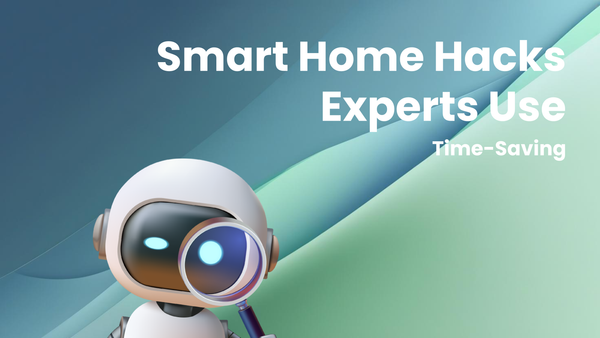Cleaning Robots: A Beginner's Guide to Buyer Behavior

Cleaning Robots: A Beginner's Guide to Buyer Behavior
Imagine never having to vacuum or mop again. For many, this isn't just a daydream, it's a reality thanks to the rise of cleaning robots. But navigating the world of robotic cleaners can be daunting. Which features truly matter? Which brands are worth the investment? Making the right choice requires understanding not just the technology, but also the why behind different designs and functionalities.
This isn't just another review list. We'll delve into the core technologies driving these devices, dissect the crucial features that separate effective cleaners from expensive toys, and equip you with the knowledge to make an informed decision that aligns perfectly with your needs and lifestyle. By understanding the underlying principles that guide the design and functionality of cleaning robots, you can move beyond marketing hype and choose a robot that delivers genuine value.
I. Understanding the Cleaning Robot Revolution
Cleaning robots, primarily vacuuming and mopping robots, have evolved from novelty gadgets to indispensable household appliances. Their popularity stems from the simple promise of convenience: freeing up valuable time by automating a tedious chore. However, their impact extends beyond mere convenience.
The Rise of Autonomous Cleaning: The first commercially available robotic vacuum cleaner, the Trilobite by Electrolux, emerged in 1997. It was a technological marvel for its time, but lacked the sophistication of modern robots. The turning point came with iRobot's Roomba in 2002. The Roomba achieved mainstream appeal due to its affordability and ease of use, effectively democratizing robotic cleaning technology.
Why Cleaning Robots Matter: In today's fast-paced world, time is a precious commodity. Cleaning robots offer a tangible way to reclaim that time, allowing individuals and families to focus on more fulfilling activities. Beyond time-saving, they contribute to maintaining a cleaner home environment, which can have a positive impact on health and well-being, especially for individuals with allergies or mobility issues.
How Do Cleaning Robots Work? Cleaning robots use a combination of sensors, software, and mechanical components to navigate and clean floors autonomously. Key technologies include:
- Navigation Systems: Robots rely on various methods to map and navigate your home:
- Random Bounce: The earliest and simplest method, robots move randomly until they encounter an obstacle, then change direction. Inefficient but inexpensive.
- Edge Following: Robots follow the perimeter of a room and then clean the interior in a systematic pattern. More efficient than random bounce.
- SLAM (Simultaneous Localization and Mapping): Uses sensors (cameras, LiDAR) to create a detailed map of the environment, allowing for intelligent navigation and path planning. The most advanced and efficient method.
- Sensors: Robots use different sensors for navigation, obstacle avoidance, and cleaning:
- Infrared Sensors: Detect obstacles and prevent collisions.
- Cliff Sensors: Prevent the robot from falling down stairs.
- Wheel Encoders: Track the robot's movement and distance traveled.
- Dirt Detection Sensors: Identify areas with high concentrations of dirt and debris, prompting the robot to focus on those areas.
- Cleaning Mechanisms:
- Brushes: Loosen dirt and debris from the floor.
- Suction: Lifts dirt and debris into the dustbin.
- Mops: Wet or dry mops clean hard floors (robotic mops).
II. Navigating the Nuances: Features and Functionality
Understanding the different features and functionalities of cleaning robots is crucial to making the right purchase decision. This is where the marketing hype meets real-world performance.
Navigation Systems: The Brains of the Operation: The navigation system is arguably the most important factor in determining a robot's effectiveness.
- Random Bounce: While affordable, this approach is inefficient and often results in missed spots and repeated cleaning of the same areas. Example: A budget robot bumping around a living room for an hour, missing corners and getting stuck under furniture.
- Edge Following: An improvement over random bounce, but still prone to inefficiencies and difficulty navigating complex layouts. Example: A robot consistently cleaning the edges of a room, but struggling to navigate around furniture in the center.
- SLAM (Simultaneous Localization and Mapping): Offers the most intelligent and efficient cleaning. Robots can create detailed maps of your home, plan optimal cleaning paths, and remember their location. Two main SLAM technologies:
- LiDAR (Light Detection and Ranging): Uses lasers to create a highly accurate map of the environment. Generally more precise and effective in dark environments. Example: A robot using LiDAR to navigate a complex floor plan, avoiding obstacles and efficiently cleaning every area.
- Visual SLAM: Uses cameras to create a map of the environment. Can be more affordable than LiDAR, but may be less accurate in low-light conditions. Example: A robot using visual SLAM to navigate a brightly lit apartment, identifying furniture and obstacles with ease.
Suction Power: More Isn't Always Better: Suction power is often touted as a key indicator of cleaning performance, but it's not the only factor.
- Air Watts (AW): A more accurate measurement of suction power than Pascals (Pa), as it takes into account both airflow and pressure.
- Brush Design: The design of the brushes plays a crucial role in loosening dirt and debris, regardless of suction power. Robots with well-designed brushes can often outperform those with higher suction but inferior brush systems.
- Sealed Airflow: A sealed airflow system ensures that suction is focused on the floor, preventing air from escaping and reducing cleaning effectiveness.
Battery Life and Coverage: Consider the size of your home and the robot's battery life to ensure it can clean your entire space on a single charge.
- Battery Capacity (mAh): A higher mAh rating generally indicates longer battery life.
- Cleaning Time per Charge: Look for robots that can clean for at least 60-90 minutes on a single charge, depending on the size of your home.
- Automatic Recharge and Resume: This feature allows the robot to automatically return to its charging dock when the battery is low, and then resume cleaning where it left off.
Smart Features: Convenience and Control: Many cleaning robots offer smart features that enhance convenience and control.
- Smartphone App Control: Allows you to start, stop, schedule, and monitor the robot from your smartphone.
- Virtual Boundaries: Define areas that the robot should avoid, such as pet bowls or delicate rugs.
- Zoned Cleaning: Clean specific areas or rooms on demand.
- Voice Control: Integrate with voice assistants like Amazon Alexa or Google Assistant to control the robot with voice commands.
- Multi-Floor Mapping: Save maps of multiple floors in your home, allowing the robot to efficiently clean different levels.
III. The Great Debate: Pros, Cons, and Controversies
While cleaning robots offer numerous benefits, they also have limitations and potential drawbacks. A balanced perspective is crucial for making an informed decision.
Pros:
- Time-Saving: Automate a tedious chore, freeing up valuable time for other activities.
- Convenience: Schedule cleaning sessions to run automatically, even when you're away from home.
- Improved Cleanliness: Maintain a consistently cleaner home environment, reducing dust and allergens.
- Accessibility: Assist individuals with mobility issues or those who struggle with traditional cleaning methods.
Cons:
- Cost: Cleaning robots can be expensive, especially models with advanced features.
- Maintenance: Require regular maintenance, such as emptying the dustbin, cleaning brushes, and replacing filters.
- Limitations: May not be able to clean all areas effectively, such as stairs or tight corners.
- Reliability: Can be prone to malfunctions or require repairs.
- Privacy Concerns: Robots with cameras raise privacy concerns about data collection and potential security vulnerabilities.
Common Debates:
- Suction Power vs. Brush Design: Which is more important for effective cleaning? While suction power is important, brush design plays a crucial role in loosening dirt and debris.
- LiDAR vs. Visual SLAM: Which navigation technology is superior? LiDAR generally offers greater accuracy, especially in dark environments, but visual SLAM can be more affordable.
- Robot Vacuums vs. Robot Mops: Which type of robot is more effective for cleaning hard floors? Robot vacuums can pick up loose dirt and debris, while robot mops can remove stains and grime.
- The Cost-Benefit Analysis: Are cleaning robots worth the investment? The value proposition depends on individual needs, lifestyle, and budget.
Expert Opinions:
- "Cleaning robots are not a replacement for traditional cleaning, but they can be a valuable supplement, especially for maintaining a consistently clean home environment." - Carolyn Forte, Director of the Home Appliances & Cleaning Products Lab at the Good Housekeeping Institute.
- "When choosing a cleaning robot, focus on navigation, suction power, and battery life. These are the key factors that determine its effectiveness." - Liam McCabe, Senior Staff Writer at Wirecutter.
- "Privacy is a growing concern with cleaning robots that have cameras. Be sure to research the manufacturer's data collection and security practices before making a purchase." - Consumer Reports.
IV. The Buyer's Blueprint: A Step-by-Step Guide
Choosing the right cleaning robot can be overwhelming, but following a structured approach can simplify the process.
Step 1: Assess Your Needs:
- Floor Type: Identify the types of flooring in your home (hardwood, carpet, tile, etc.).
- Home Size: Determine the square footage of the area you want the robot to clean.
- Pet Ownership: Consider whether you have pets and the amount of pet hair they shed.
- Allergies: If you have allergies, look for robots with HEPA filters.
- Budget: Set a realistic budget for your purchase.
- Smart Home Integration: If you have other smart home devices, consider robots that integrate seamlessly with your existing ecosystem.
Step 2: Research and Compare Models:
- Read Reviews: Consult reputable review websites and magazines to get unbiased opinions on different models.
- Compare Specifications: Compare key specifications such as navigation system, suction power, battery life, and features.
- Watch Videos: Watch videos of robots in action to see how they perform in real-world conditions.
- Visit Stores: If possible, visit a store to see the robots in person and ask questions.
Step 3: Prioritize Key Features:
- Navigation System: Choose a navigation system that aligns with your home's layout and complexity. For larger homes with complex layouts, SLAM is recommended.
- Suction Power: Select a robot with sufficient suction power for your floor type and cleaning needs.
- Battery Life: Ensure the robot has enough battery life to clean your entire space on a single charge.
- Smart Features: Consider which smart features are most important to you, such as smartphone app control, virtual boundaries, and voice control.
Step 4: Consider Maintenance and Support:
- Maintenance Requirements: Understand the maintenance requirements of the robot, such as emptying the dustbin, cleaning brushes, and replacing filters.
- Warranty: Check the warranty period and coverage.
- Customer Support: Research the manufacturer's customer support reputation.
Step 5: Make a Purchase and Test Thoroughly:
- Purchase from a Reputable Retailer: Buy from a reputable retailer with a good return policy.
- Test the Robot in Your Home: Test the robot in your home to ensure it meets your expectations.
- Review the Return Policy: Understand the retailer's return policy in case you are not satisfied with the robot.
Common Pitfalls to Avoid:
- Ignoring Floor Type: Choosing a robot that is not suitable for your floor type.
- Overestimating Battery Life: Underestimating the battery life needed for your home.
- Neglecting Maintenance: Failing to perform regular maintenance, which can reduce the robot's performance and lifespan.
- Ignoring Customer Reviews: Disregarding customer reviews, which can provide valuable insights into the robot's reliability and performance.
V. The Future of Cleaning Robots
The cleaning robot industry is constantly evolving, with new technologies and features emerging regularly.
- Improved Navigation: Expect further advancements in navigation technology, such as more accurate mapping, better obstacle avoidance, and improved multi-floor cleaning capabilities.
- Enhanced Cleaning Performance: Look for robots with more powerful suction, more effective brush designs, and advanced cleaning modes.
- Integration with Smart Home Ecosystems: Expect tighter integration with smart home ecosystems, allowing for seamless control and automation.
- More Affordable Prices: As technology matures and competition increases, expect prices to become more affordable.
- Specialized Cleaning Robots: The emergence of robots designed for specific tasks, such as window cleaning, pool cleaning, and gutter cleaning.
Ultimately, the future of cleaning robots is bright. As technology continues to advance, these devices will become even more capable, convenient, and affordable, further transforming the way we clean our homes.
Conclusion
Cleaning robots are more than just gadgets; they represent a paradigm shift in how we approach household chores. By understanding the core technologies, weighing the pros and cons, and following a structured buyer's guide, you can confidently choose a robot that aligns with your needs and lifestyle. The right cleaning robot can free up your time, improve your home's cleanliness, and even contribute to a healthier living environment.
Now that you have a deeper understanding of cleaning robots, take the next step. Assess your needs, research different models, and prioritize the features that matter most to you. The perfect cleaning robot is out there, waiting to transform your cleaning routine.




